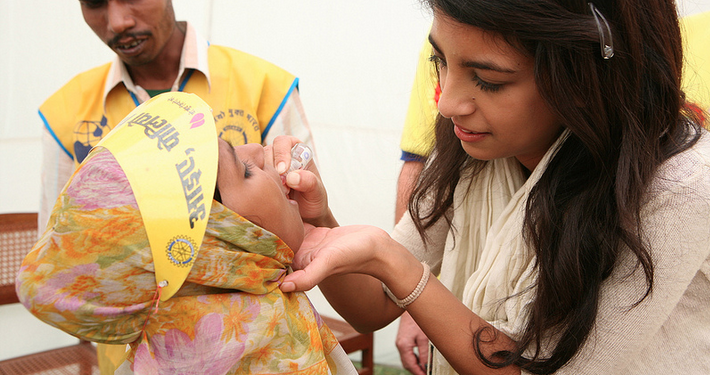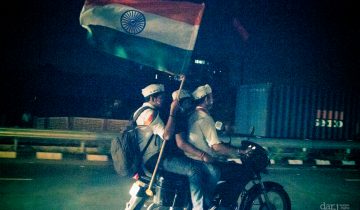Polio Aunties: Tough Job Ahead to Maintain Eradication

Rukhsar Khatoon was 18 months old when she was diagnosed with polio, and was the last to have the disease in India. Polio may seem like a distant problem to us, because it was eradicated in the US in 1979. However, it remains a problem in many developing nations such as India.
Background
Polio, or poliomyelitis, is a viral infectious disease that causes motor neuron damage. Although around 90% of those who are infected with polio do not show symptoms, polio can cause paralysis and death. Polio mainly spreads through the fecal-oral route, which is why it is often common in places with poor sewage and water systems such as those in developing nations. In 1% of polio cases, the virus enters the central nervous system, destroying motor neurons and causing muscle weakness or paralysis. There is no cure for polio, and it can only be prevented, as is the case for many viral infections.
In 1952, the height of the polio epidemic, nearly 60,000 cases of polio were reported in the United States alone. Many had to live in Iron Lungs, or artificial respirators, if they suffered from paralytic polio. The Global Polio Eradication Initiative was launched in 1988, when polio was endemic in 125 countries and about 350,000 people were paralyzed by polio annually (according to the Bill and Melinda Gates Foundation). Now, polio is only endemic in 3 countries, Nigeria, Pakistan, and Afghanistan.
In India
In 2006, half of all polio cases took place in India. India had a high incidence of polio because of its population density, poor sanitation, and low rates of immunization.
India received funding from international sources such as the Bill and Melinda Gates foundation, which hired two million staff to vaccinate 170 million children on two dates. But the Indian government played an even larger role with the Pulse Polio Initiative, an immunization campaign established in 1995. With the help of the Pulse Polio Initiative, 12.1 billion vaccinations have been administered since 1995.
No polio cases have been reported since January 2011 in India, which was declared polio-free in 2012. However, many remain worried that polio can reemerge if vaccinations are not regularly administered.
The Key
But India’s eradication of polio would not have been successful without the help of hundreds of thousands of “polio aunties.” These women work in health care centers that provide free basic health services to those who cannot afford to pay. They often cover more than 500 houses a day and are paid 4,000 rupees every month, the equivalent to 68 USD. Their job is to educate people in poor areas about polio. One of the main worries for the future of polio in India is that children need to be re-immunized against polio. Now that India is polio-free, those who are not educated about vaccinations will not want to have their children go through what they think is an unnecessary second round of vaccinations. Therefore, the polio aunties find children in remote villages who need to be vaccinated. The aunties bring the children sweets and make personal connections with the families, gaining their trust and helping them understand how their children will be protected with immunization.
These women are dedicated to their highly demanding jobs, for which they are not paid much. But although they do not have much recognition, they are helping protect their country against a deadly disease. As health care center worker Ritu Tripathi says, “We have fought hard to beat polio. But we cannot afford to rest if we want to remain free from the disease.”
[Image Attribute: Source]



